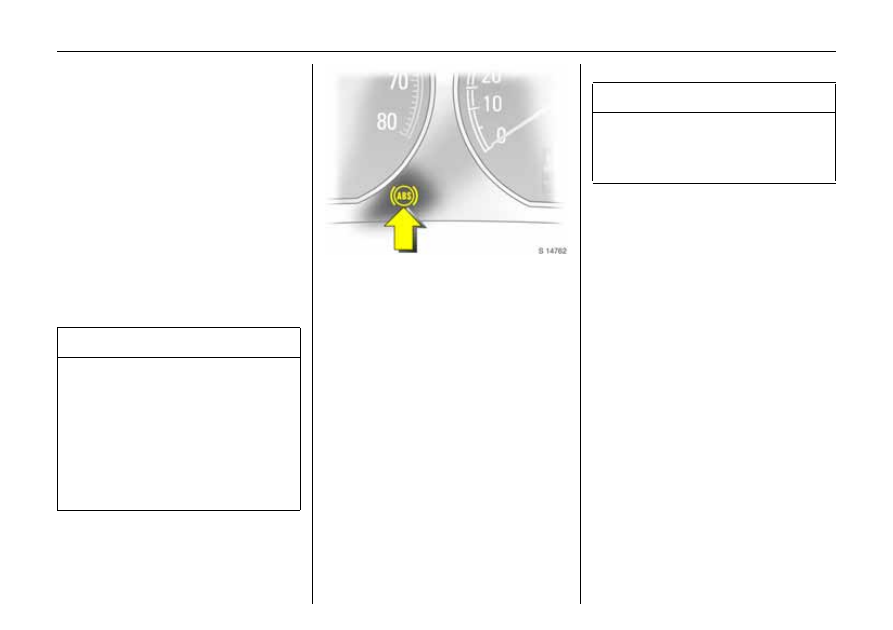Vauxhall Vectra (2007 year). Manual - part 14

210
Driving and operation
Anti-lock Brake System (ABS
u
)
ABS continually monitors the brake system
and prevents the wheels from locking
reg ardless of the type of road surfac e or
tyre grip.
It starts to regulate the braking p ressure as
soon as a w heel shows a tendency to lock.
The v ehicle remains steera ble, even in the
event of very heavy braking, for instance
on bends or when sw erving to av oid an
obstacle. Even in the ca se of full-on
braking, the ABS makes it p ossible to drive
round an obsta cle without releasing the
brakes.
ABS control is made app arent through a
pulse in the brake peda l and the noise of
the regulation proc ess.
Control ind icator u for ABS
It illum ina tes for a few seconds after the
ignition is turned on. The system is read y
for operation when the control indicator
extinguishes.
If the control indicator does not go out
after a few seconds, or if it illuminates
whilst driving, there is a fa ult in the ABS.
The brake system remains operational
without ABS regulation.
Self-check
Each time the ignition is turned on and the
engine started , after moving away from a
speed of around 2 mph (3 k m/h) the system
performs a self-check which may be
audible.
Fault
You can continue driving, provided you
drive with care and anticipation.
Hav e the cause of the fault elim ina ted by a
workshop. The self-d ia gnosis integrated
into the system allows rapid fault
identification.
9
Warning
For optimum b ra king, keep the brak e
pedal fully depressed throughout the
braking p rocess, despite the fac t that the
pedal is pulsating. Do not red uce the
pressure on the pedal.
Do not let this special safety feature
tempt you into taking risks when driving.
Traffic safety can only be achieved by
adopting a responsib le driving style.
9
Warning
If there is a fault in ABS, the wheels may
be subject to locking due to braking that
is heavier tha n normal. The ad vantages
of AB S are no longer opera tional.